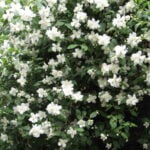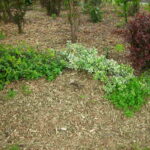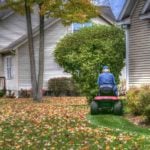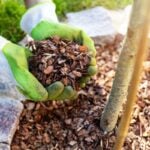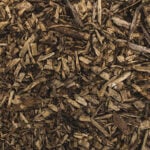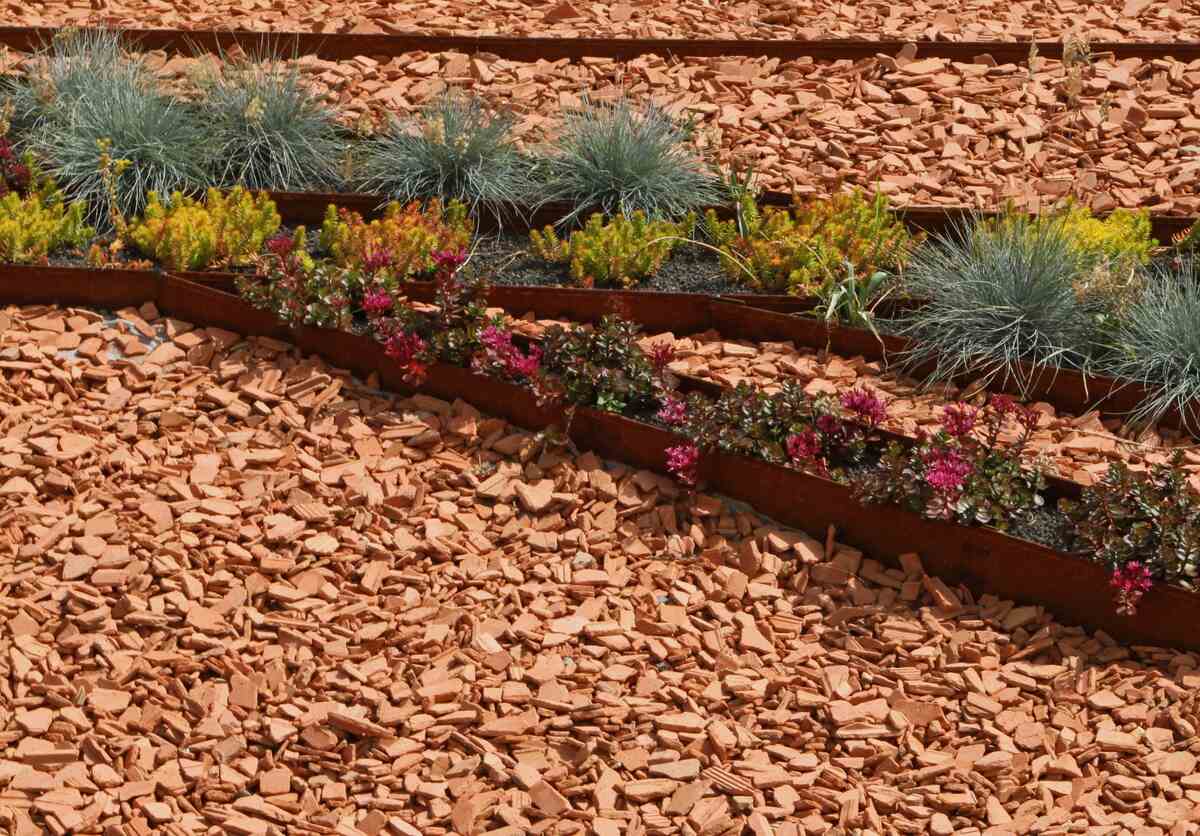
Mulch is essential for landscaping, as it helps retain soil moisture, suppress weeds, and enhance outdoor spaces. In Boise, you can find mulch at local garden and recycling centers, online suppliers, or make your own.
Each option has its benefits. Garden stores offer a variety of types and advice. Recycling centers provide cost-effective, environmentally friendly mulch. Online suppliers offer home delivery and price comparison convenience. DIY mulch lets you recycle your yard waste, making it a cost-effective and eco-friendly choice.
Options for Mulch in Boise
Boise offers several sources of mulch suitable for landscaping projects. Your choice depends on project size, budget, and personal preferences. Each source provides a variety of the best types of mulch for Boise, allowing you to select the most suitable option for your needs and budget.
When buying mulch, size matters.
- A bag of mulch will contain, on average, 2 cubic feet but can range from 1.5 to 3 cubic feet per bag. These are convenient for small to medium-sized projects and easy to transport.
- Mulch sold by the cubic yard is more suitable for large projects since it’s often delivered in bulk. It’s usually more cost-effective for large amounts, but you may need a truck or opt to arrange for delivery.
Local Garden Supply
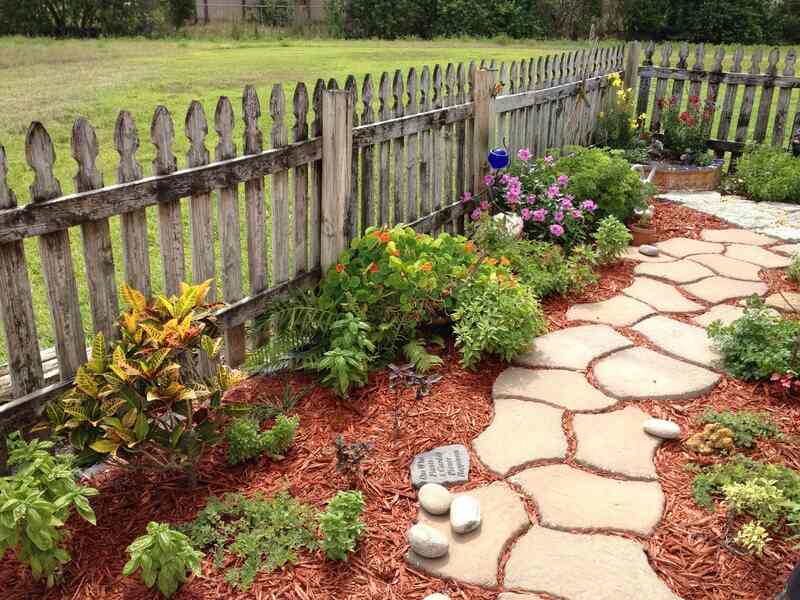
Garden supply stores in Boise offer a variety of mulch options, including both organic and synthetic materials. Staff can guide you on the best type of mulch for different plants and soil conditions, ensuring you have access to effective, high-quality products. Many garden centers also offer delivery services for added convenience.
The average cost of mulch at garden supply stores varies based on mulch type and amount:
- By the bag: Typically this cost ranges from $3.25 to $6.50 per bag.
- By the cubic yard: Prices vary between $30 and $110 per cubic yard.
Recycling Centers
Derived from organic waste, recycled mulch enriches the soil, retains moisture, and suppresses weeds. It also lessens waste, benefiting the environment. Gardening mulch made from recycled materials can be found at municipal and private recycling centers in Boise. Since these centers have specific guidelines for purchasing mulch, it’s wise to check their procedures beforehand.
Recycling centers that offer mulch in The City of Trees include:
Boise Community Forestry Office provided by the City of Boise supplies mulch throughout the year. They recycle wood from trees pruned or removed from Boise’s city forest as part of their environmental efforts.
- By the bag: Mulch is available at $5.50 per bag (lawn-sized bags). You’ll need to bring your own bags and a shovel.
- By the cubic yard: Mulch is priced at $20.50 per cubic yard. The staff can assist in loading the mulch into an open-bed pickup or trailer.
Diamond Street Recycling, located in Boise, provides various grades of recycled mulch. They specialize in converting green waste into soil conditioners, presenting a sustainable solution for homeowners. Diamond Street Recycling also offers delivery options.
- By the cubic yard: Prices range from $8 to $34 per cubic yard.
Tree Top Recycling serves the Boise area with a wide range of bark sizes for various landscaping needs. Tree Top Recycling also offers delivery and installation services.
- By the cubic yard: Pricing ranges from $45 to $68 per cubic yard
Online Suppliers
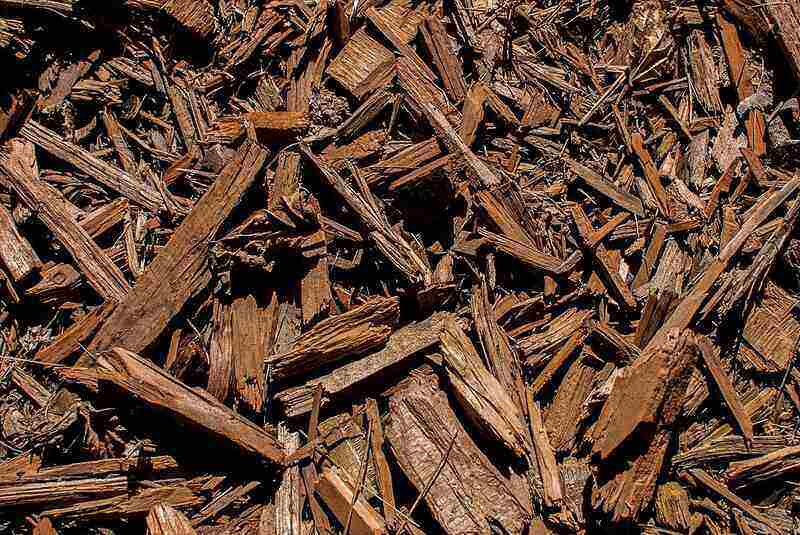
Online suppliers offer plenty of options that are available for home delivery. Ordering mulch online can be cost-effective, even for bulk orders. However, when ordering, consider the delivery timeline, return policy, customer service reputation, and any additional fees or restrictions.
Mulch is often sold in bags from 0.8 cubic feet to 2 cubic feet, depending on the type of mulch. Rubber mulches tend to be higher in price than wood mulches. Ensure you get the right size and material for your project. Delivery is often included or free when purchased in bulk.
Here are a few examples of online retailers of mulch:
Amazon offers a variety of mulch brands and types, such as cedar, cypress, pine straw, and cocoa bean. The prices vary based on the type and brand. While they don’t sell mulch by cubic yard, you can purchase in bulk.
- By the bag: Prices can range from $5 to $30 per bag.
Home Depot delivers a wide selection of mulch, including organic, inorganic, and specialty or colored varieties, to Boise homeowners. Each type has unique benefits suitable for different gardening needs. They sell bags either individually or in bulk by the pallet.
- By the bag: The cost of mulch varies from $2 to $7 per bag.
- In bulk: A 1/2 pallet of recycled rubber mulch starts around $500 for 37.5 cubic feet; a pallet of mulch starts at $600 for 75 cubic feet.
Lowe’s home improvement store offers a variety of mulch products suitable for all landscaping needs. These range from traditional wood chips to rubber mulch made from recycled materials to nutrient-rich pine bark. They also provide bulk mulch by the pallet.
- By the bag: The cost of mulch varies from $2 to $10 per bag.
- In bulk: A 1/2 pallet of recycled rubber mulch of 37.5 cubic feet starts at $479; a full pallet of 75 cubic feet starts at $629.
DIY Mulch
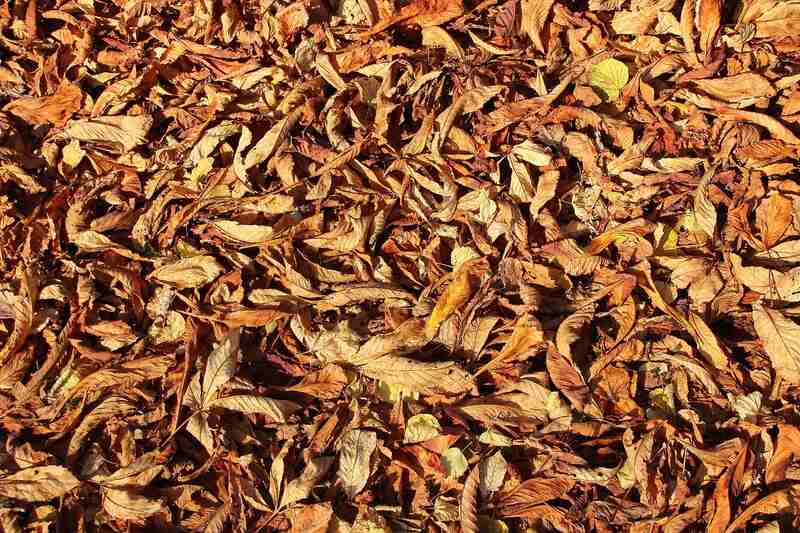
Making mulch at home using yard waste and a wood chipper or shredder is a cost-effective, eco-friendly lawn care option, especially if you opt to xeriscape your Boise yard. Additionally, understanding the benefits of different types of mulch materials can help you select the best option for your landscaping needs.
Keep in mind that when making DIY mulch, it’s important to ensure the materials are free from pesticides or herbicides, disease, pests, and seeds to avoid potential gardening problems. You may also consider buying a mulching lawn mower to make the job easier.
The following are examples of DIY mulch materials you can use:
- Leaves: Not sure what to do with the leaves in your yard? Shred them into smaller pieces and use them as mulch. They decompose slowly, enriching the soil with nutrients.
- Grass clippings: Also known as grasscycling, you can use grass clippings as mulch after mowing your lawn. Ensure your lawn is not treated with any pesticides or herbicides before using it as mulch.
- Wood chips: Pruned branches can be chipped for mulch. Fresh chips may lower soil nitrogen, so aging them is recommended. They can also be used for garden paths or placed around plants. As chips decompose, worms will help mix them into the soil.
- Pine needles: Fallen needles from your pine trees, a plant native to Idaho, can serve as effective mulch. This is particularly beneficial for native Idaho plants that prefer acidic soil. This method recycles natural waste, enhances your garden’s health, and helps maintain a tidy yard.
- Sheet mulching: This technique involves layering cardboard or newspaper over the soil and then covering it with compost and other organic materials. Sheet mulching is an excellent way to suppress weeds and gradually improve soil quality over time.
Mulch and Its Benefits

Mulch is commonly used in landscaping, and you can improve your lawn with mulch as it serves as a protective covering for soil. It also retains moisture, suppresses weeds, regulates soil temperature, enhances fertility by adding nutrients, and prevents soil erosion, thus improving soil health and quality.
Pro tip: For a lush and lovely lawn, ensure you plant the best grass seed for Idaho for a yard that’s greener than your neighbor’s envy.
Key functions of mulch include the following:
- Moisture retention: Mulch reduces evaporation, keeps soil damp, and enhances water absorption. This minimizes runoff, improves drainage in your yard, and reduces watering frequency.
- Weed suppression: Mulch forms a physical barrier that prevents sunlight from reaching weed seeds. This hinders their germination and growth for effective weed control.
- Regulates soil temperature: Mulch insulates and moderates soil temperature. It keeps soil cooler in hot weather by blocking sunlight and retains heat in cold weather, so you won’t have to repair your lawn after winterkill.
- Enhances soil fertility: Organic mulches are excellent soil amendments that decompose over time and enrich the soil with vital nutrients that promote plant growth.
- Prevents soil erosion: Mulch protects the soil in your yard from wind and water, helping to control erosion. It reduces the impact of raindrops and slows the speed of runoff, preserving the soil structure and preventing the loss of topsoil.
- Aesthetic appeal: Mulch enhances the look of outdoor spaces by providing a neat, uniform appearance. It integrates well with natural surroundings, improving curb appeal and the overall design of your lawn.
- Pest control: Certain types of mulch, like cedar, can deter pests from your plants due to their natural insect-repelling properties. However, you should keep mulch at least a foot away from your home’s foundation to prevent termites from infesting your home.
Types of Mulch
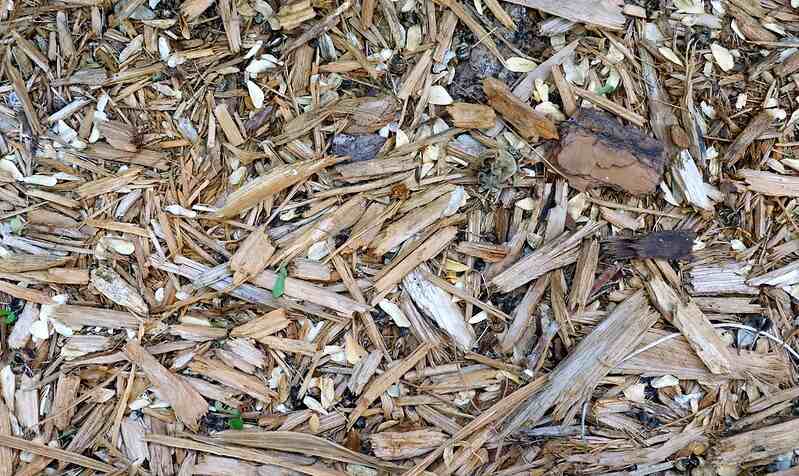
Understanding that all mulch is not created equal is crucial. Each type has distinct properties and uses. Whether you aim to conserve moisture, improve soil fertility, suppress weed growth, or beautify your landscape, selecting the appropriate mulch type is essential. Learn how different mulch types work and how they can be applied to gardening and landscaping.
There are two main categories of mulch. Organic mulch is made from naturally occurring materials such as leaves, grass clippings, compost, bark, and straw. It enriches the soil with nutrients as it decomposes. Conversely, synthetic mulch is made from materials like rubber and plastic. Although it doesn’t decompose or provide nutrients, it is durable and retains its color for a longer time.
- Bark mulch: A popular choice due to its visual appeal, bark mulch comes in several colors and can add a decorative touch to your garden.
- Wood chips: This is a type of organic mulch that is effective at suppressing weeds and retaining moisture. Wood chips also give a neat, tidy appearance to gardens.
- Peat moss: This organic mulch is particularly effective at retaining water and is therefore a good choice for plants that require a lot of moisture.
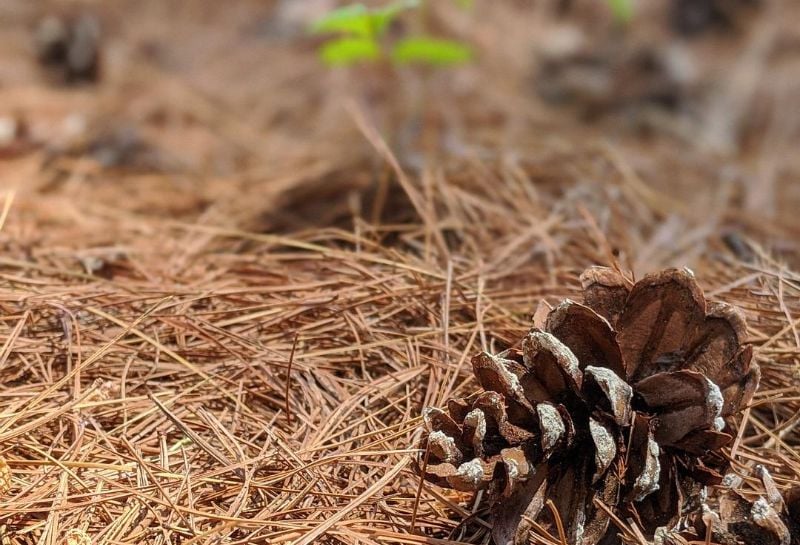
Photo credit: arrowmaze / Pixabay
- Straw mulch: This golden-colored mulch can give a bright, cheerful look to your garden and retain moisture. It’s particularly popular in vegetable gardens and newly seeded lawns.
- Cocoa shell mulch: Though a bit more expensive, cocoa shell mulch is excellent at retaining water and also adds nutrients to the soil as it decomposes.
- Pine bark nuggets: These large, chunky pieces of bark can add a rustic, natural look to your garden.
- Rubber mulch: Available in a variety of colors, rubber mulch can provide a neat, uniform appearance to your outdoor space. And since it doesn’t decompose, its color won’t fade as quickly over time.
FAQ: Mulch
How Much Mulch Do I Need?
To estimate the quantity of mulch needed for your project, determine the area you aim to cover (usually measured in square feet) and how deep you should mulch. The required depth often depends on its purpose and type. For example, a depth of 2 to 3 inches is common for weed control.
Here’s a simple formula to calculate the amount of mulch needed:
Step 1. Measure the length and width of your space in feet. Multiply these two numbers to find the area in square feet.
Step 2. Decide on the depth of mulch you want to apply.
Step 3. Multiply the area of your garden bed by the desired depth of mulch. This gives you the volume of mulch needed in cubic feet.
Step 4. A cubic yard covers a 324-square-foot area, so divide the result of Step 3 by 324.
For example: If you want to add mulch to a depth of 3 inches in a garden bed that is 10 feet wide and 20 feet long, then:
- Width x length = 10 feet x 20 feet = 200 square feet
- 3 inches of mulch (depth)
- 200 square feet x 3 inches = 600 cubic feet
- 600 ÷ 324 = 1.85 cubic yards of mulch
When is the Best Time to Mulch?
The best time to spread mulch in Idaho is in mid-spring when the soil warms up and in late autumn as part of your fall lawn care checklist. This will help to protect your plants from temperature extremes, suppress weeds, and conserve soil moisture.
Are Mulch and Compost the Same Thing?
No, mulch and compost are not the same thing. While they both contribute to the health of the soil, they serve different purposes. Mulch is used primarily to suppress weeds and conserve soil moisture, and it is typically placed on top of the soil. Compost, on the other hand, is rich in nutrients and is worked into the soil to improve its quality.
When to Call a Pro
Mulch holds significant benefits for gardening and landscaping. Buying it from various sources is a smart investment for outdoor areas. For larger projects, or when faced with certain limitations, it’s advantageous to hire a Boise landscaping professional for mulching in Boise. They can handle large quantities, deliver the mulch, choose the right type, and install it for you.
Main Image Credit: Adobe Stock
LawnStarter participates in the Amazon Services LLC Associates Program and other retailer affiliate programs. LawnStarter may earn revenue from products promoted in this article.
